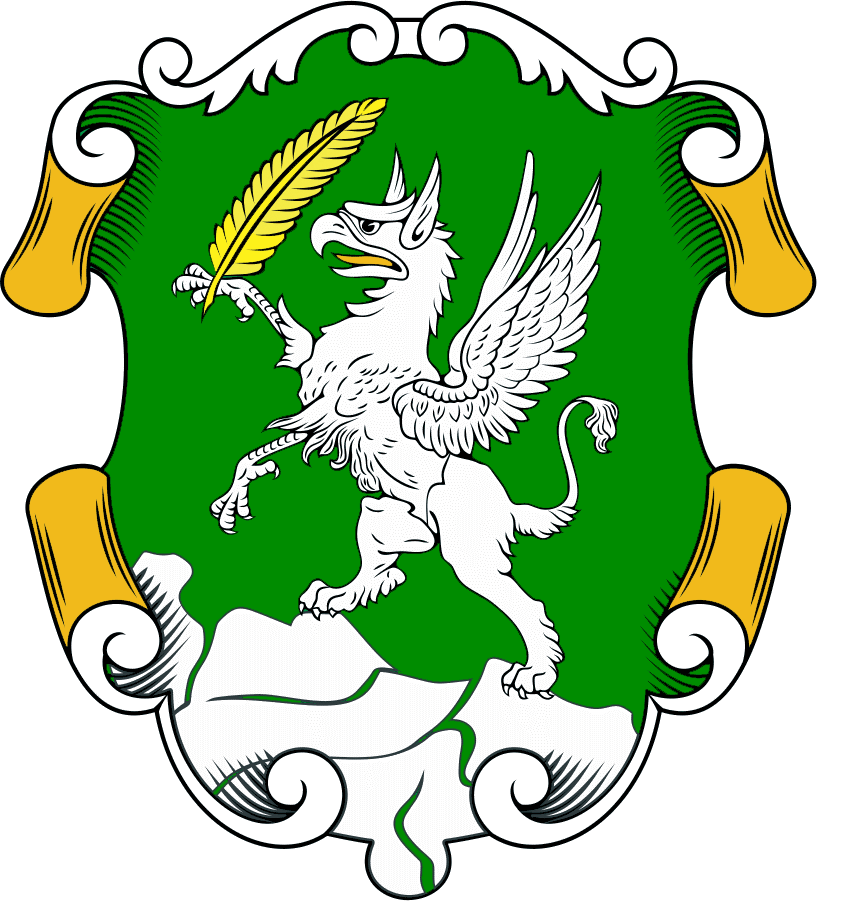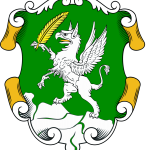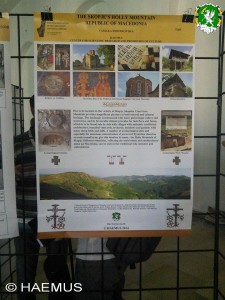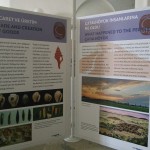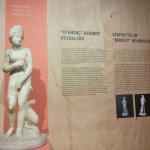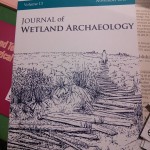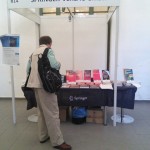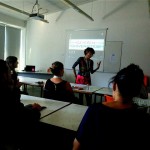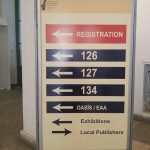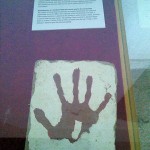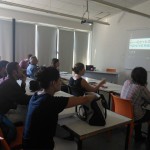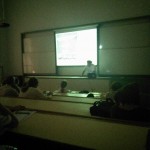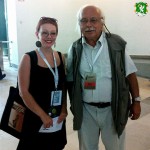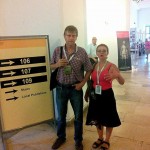
Members of HAEMUS took part at the European Association of Archaeologist‘ 20th annual meeting, held in September 10-14, 2014, at at the Istanbul Technical University, Istanbul, Turkey. In the official program two archaeologists from our organization in three different sessions had own presentations and posters. We will remember the 20th EAA conference in Istanbul as the largest ever. We were very happy to participate together with more than 2,300 participants, 150 sessions, and over 2,000 papers and posters.
The team of HAEMUS at EAA 2014 in Istanbul, Turkey
Vasilka Dimitrovska, M. Sci in archaeology
HAEMUS – center for scientific research and promotion of culture
Session T02S008 Managing archaeological heritage
Management of cultural heritage – reflection from the Republic of Macedonia
The independence of the Republic of Macedonia created the necessary preconditions for the transformation of cultural institutions. For the most part, the transformation meant decentralization of government-funded institutions. However, the law was not very helpful for the institutions, which came under the management of local governments not ready to take up this responsibility. Macedonian museums are burdened by the lack of management and by the politicization that occurred in the last 20 years. A complete re-evaluation of museums and providing them with the best possible management will be necessary to overcome all these problems.
In 2013, in an attempt to transfer the artifacts from the old to the new building of the Archaeological Museum in Skopje, curators discovered one of the biggest thefts ever registered in Macedonia. More than one hundred gold artifacts from the period of Antiquity were missing. This event calls into question not only the security, but also the overall management of cultural heritage. Instead of having these findings published in archaeological journals, they will probably end up in private collections, without any hope to become available to the public. This project is dedicated to the Macedonian museums and to every other museum in the world, which by the similarity of circumstances can be the subject of looting and destruction.
Marina Spirova, M. Sci. in archaeology
HAEMUS – center for scientific research and promotion of culture
Session T02S003 New data on Social complexity in the Balkans and around: Prehistoric societies from the Vth millennium BC
The early phase of the Bregalnica group in the Eneolithic in Macedonia
The territory of Macedonia was considered to be part of the large Bubanj-Salkutsa-Krivodol complex of the Eneolithic period until the 1980s. Excavations undertaken over the past 30 years have distinguished an earlier phase of the Eneolithic period in the eastern part of the country, thereby established a better chronology for the Eneolithic in Macedonia. Due to the fact that most of the excavated sites are located near the Bregalnica River, the group has been named the Bregalnica group and two phases of development can be recorded. This paper will focus on the characteristics of the first phase of the group, belonging to the early period of the Eneolithic in Macedonia. New data on the settlements, figurines, pottery typology and decoration techniques will be presented. We aim to contribute to a better understanding of the spiritual life of the eneolithic societies by taking a closer look at the findings from the sanctuary at Spanchevo. The abundance of finds reveals aspects of the ritual practices of the inhabitants. The paper also reflects on the close ties that this group had with neighboring cultures.
Vasilka Dimitrovska, M. Sci in archaeology
HAEMUS – center for scientific research and promotion of culture
Session T02S008 Managing archaeological heritage
The Skopje’s Holy Mountain, Republic of Macedonia
‘Cultural Resource Management of Skopska Crna Gora Mountain‘is a long-term project introducing this location both, to the science and the tourism sector. Cultural resources management (CRM) is the terminology unknown to the institutions in the Republic of Macedonia engaged in culture and cultural heritage. The detailed documentation of the Macedonian heritage is still the topic of many debates and its upcoming process.
Due to its location in the vicinity of Skopje, Skopska Crna Gora Mountain provides magnificent pleasure in both, nature and cultural heritage. The landscape is intersected with many picturesque valleys and waterways, favorable climate lush in flora and fauna, and side by side village with authentic traditional architecture, beautifully vineyards, orchards, meadows and gardens with many sheepfolds and mills. Different ethnicities, reflecting the multi-ethnic and multicultural Macedonia, can be seen in the traditional folk costumes and clothes embroideries. The project consists of identification, evaluation, and conservation of archaeological sites and especially the enormous concentration of original Byzantine churches on such a small area, which gave the name of this location as the ‘Holly’ mountain of Skopje.
